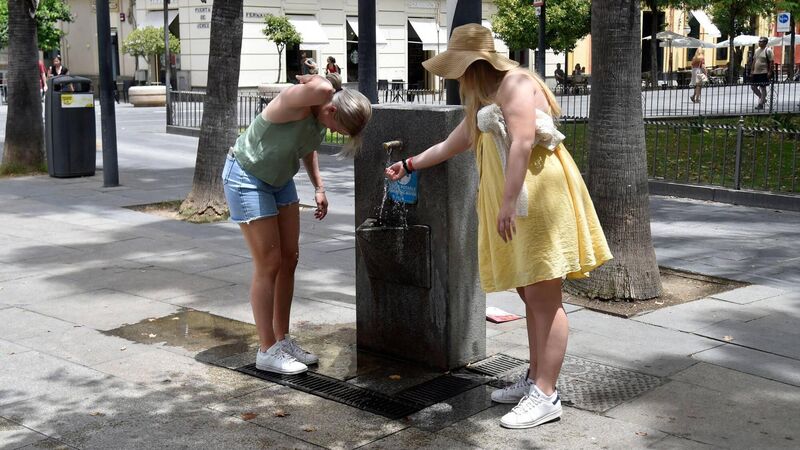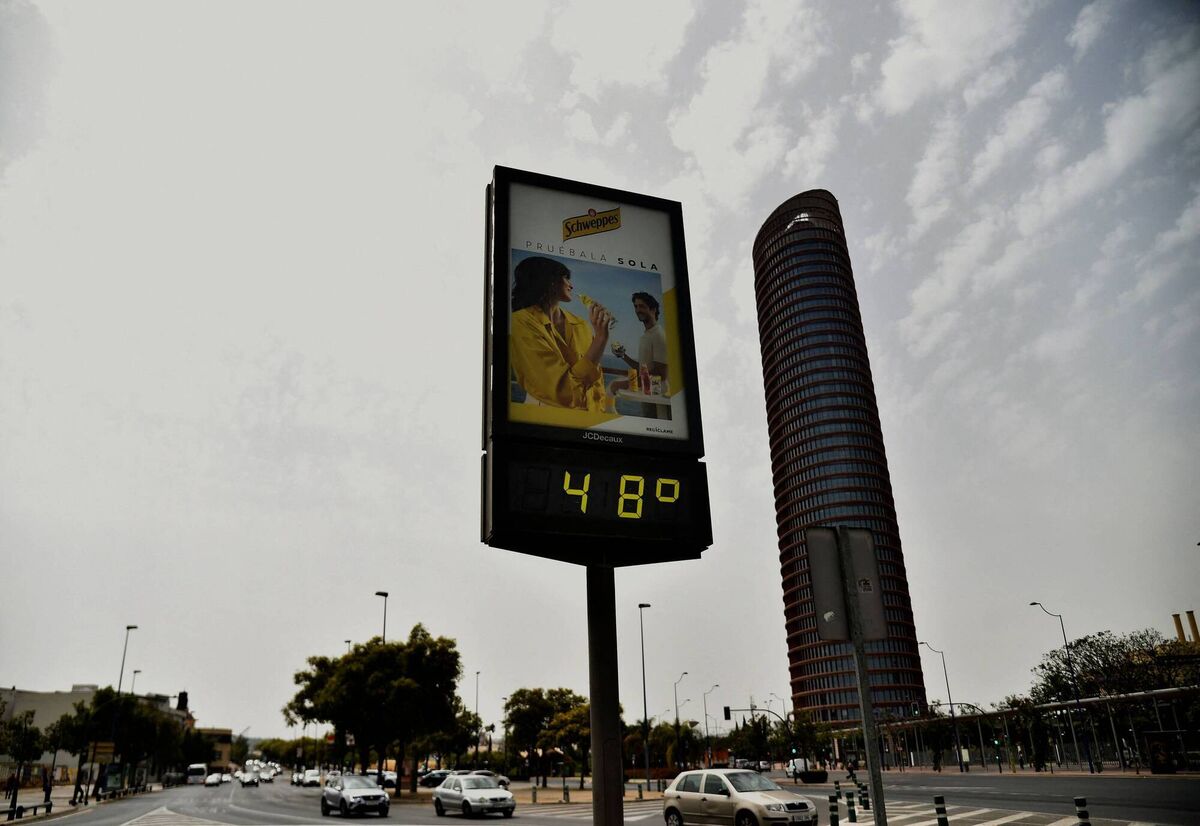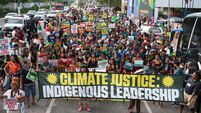Human-induced climate change driving record temperatures

People cool off to fight the scorching heat during a heatwave in Seville, Spain, on June 13. Picture: Christina Quicler/AFP via Getty Images
All naturally occurring climate events now take place in the context of human-induced climate change, the World Meteorological Organization (WMO) has said — as heatwaves, droughts, and floods continue to ravage different areas of the globe.
While the countries including Spain and France have seen record-breaking temperatures for the second month in a row, the drought-blighted Horn of Africa has now experienced four successive failed rainy seasons, with this year’s March-May season predicted to be the driest on record, according to Irish humanitarian organisations.
Météo France, the country's weather forecaster, said temperatures had exceeded 35C near the Mediterranean and that the mass of hot air would venture northwards throughout the week.
Temperatures have exceeded what would be expected in July and August, while parts of Spain have exceeded 40C in some areas.

Dóchas, which collectively represents Irish development and humanitarian organisations, said the world had to wake up to the African drought in Kenya, Somalia, and Ethiopia.
"We are now facing the consequences of years of inaction,” said Dóchas chief executive Jane-Ann McKenna.
Meanwhile, in the US, floods and rockslides "beyond record levels" have forced the closure of Yellowstone National Park in the west of the country.
Bridges and roads have crumbled in the vast park, added to vast power outages, the destruction of some homes, and evacuations as the force of the extreme weather took hold.
The WMO warned in recent days that the "the ongoing protracted La Niña event, which has affected temperature and precipitation patterns and exacerbated drought and flooding in different parts of the world, will continue until at least August and possibly to the northern hemisphere fall and start of winter".
La Niña describes the large-scale cooling of the ocean surface temperatures in the central and eastern equatorial Pacific Ocean, and is the opposite of the El Niño warming phenomenon.
It leads to changes in the tropical atmospheric circulation, namely winds, air pressure, and rainfall, the WMO said.
The ongoing drought in the Horn of Africa and southern South America bear the hallmarks of La Niña, as does the above average rainfall in South-East Asia and Australasia, and predictions for an above-average Atlantic hurricane season, the organisation added.
WMO secretary general Professor Petteri Taalas said: “Human-induced climate change amplifies the impacts of naturally occurring events like La Niña and is increasingly influencing our weather patterns, in particular through more intense heat and drought and the associated risk of wildfires, as well as record-breaking deluges of rainfall and flooding."
Read More
CLIMATE & SUSTAINABILITY HUB












